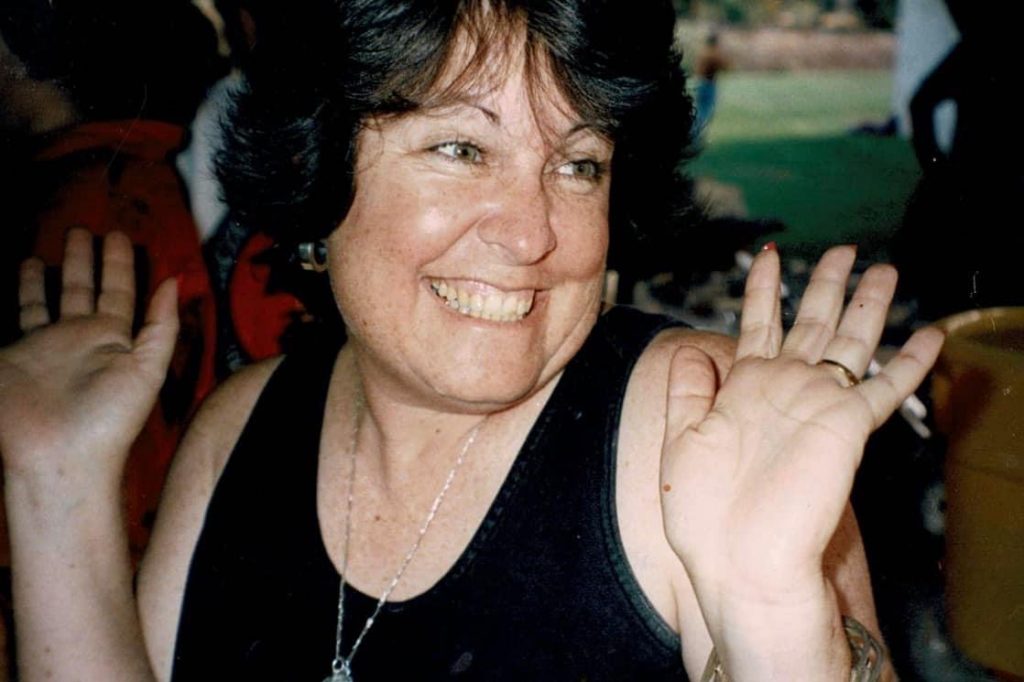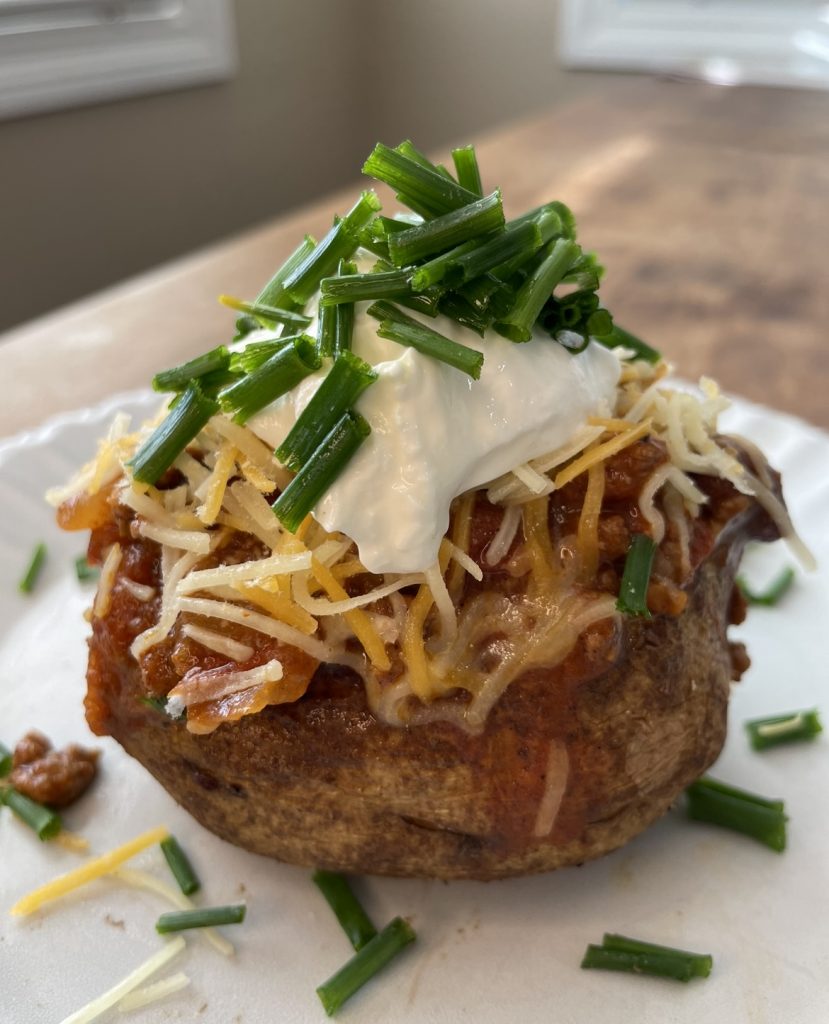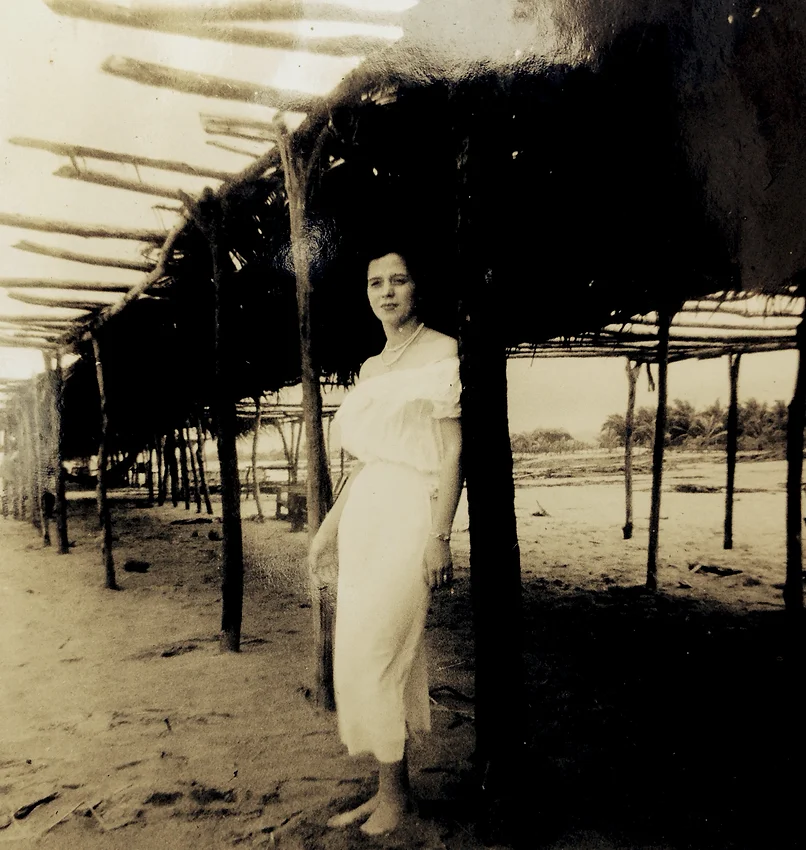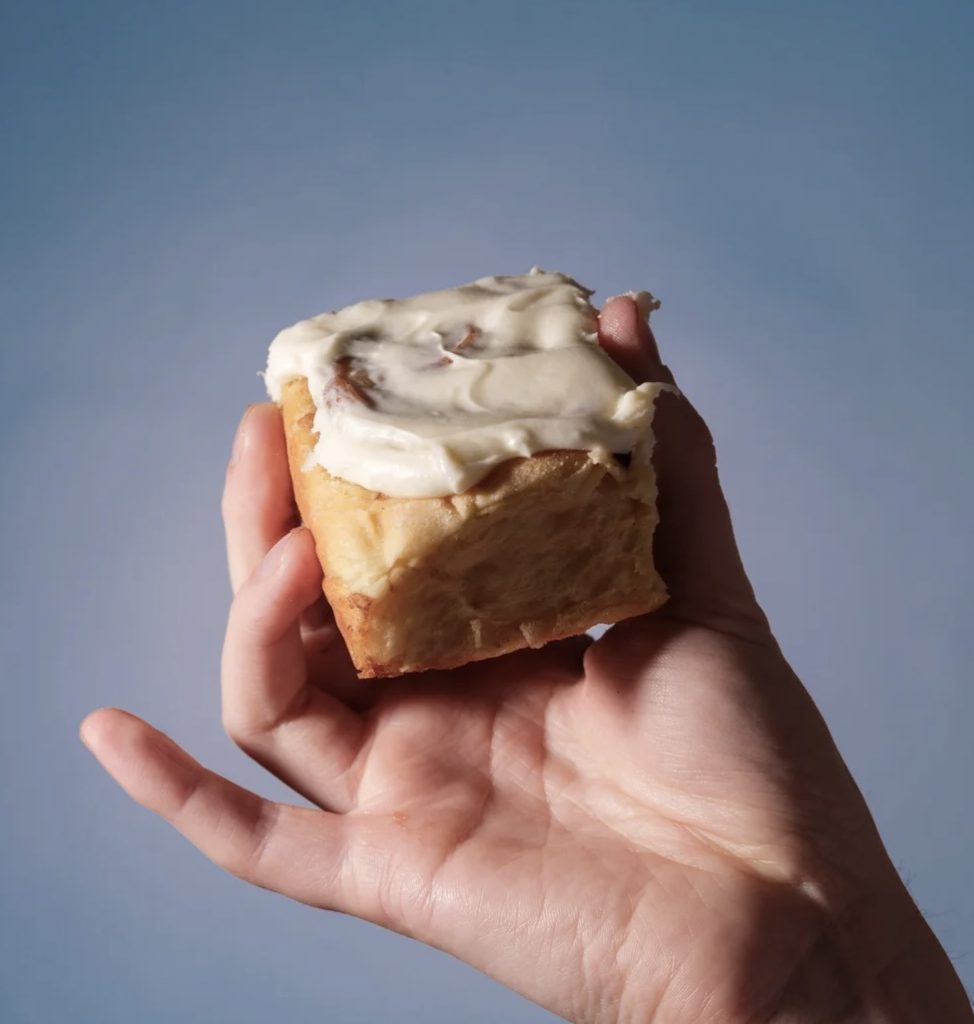The term “grief ritual” is a relatively new one to me, although it seems I have practiced such rituals for years. I’m grateful to a random Instagram grief writer (whose feed I can no longer find) for equipping me with the words that have evaded me for the last 16 years.
Grief rituals can be described as intentional actions that work to assuage the feelings of grief that envelop someone after loss. I had no idea that death would be such a constant companion in my adult life, but in the deepest throes of my grief, rituals are what save me again and again.
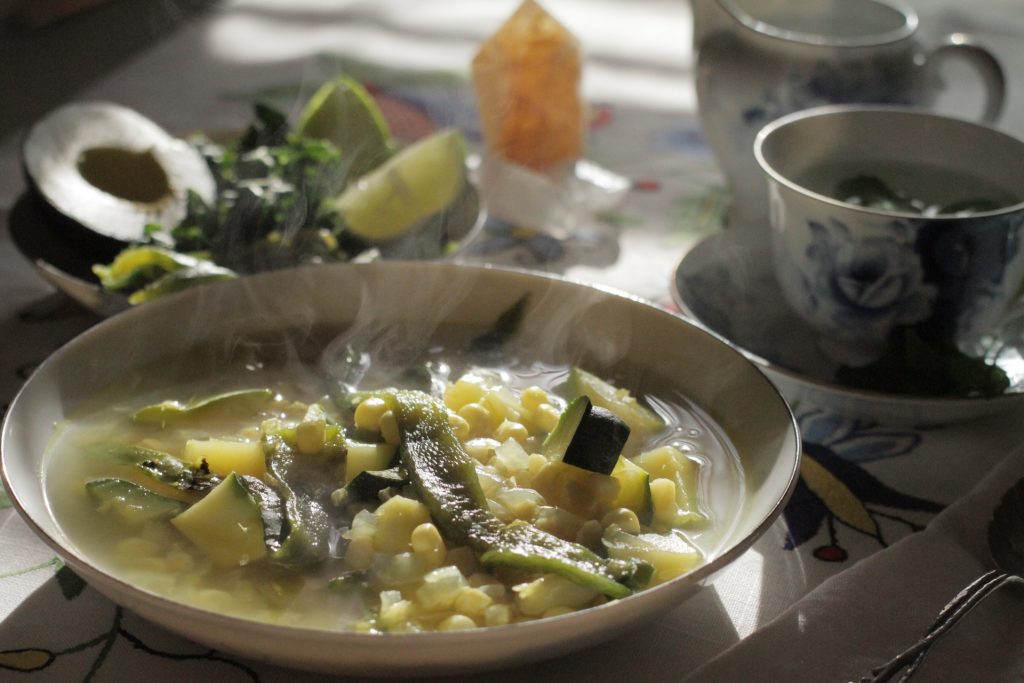
PHOTO BY GABRIELA ROCHA CABALLERO.
In old and fresh grief, cooking is a balm
When I was just 22 (and two weeks post-college graduation), my mom was murdered. My brother was immediately jailed for the offense, although it would take 16 years to receive justice in its most ultimate form for his heinous choices. As you can imagine, I was left with massive grief in Mom’s wake. The grief of losing my mom — my best friend, my mentor, my confidante. I was also left with the grief of losing my whole immediate family in one fell swoop. I mourned, too, that I would never receive justice for the years of preceding abuse my brother executed upon Mom and me.

PHOTO BY ANNIE VOVAN
Eleven years after Mom’s murder, my sometimes-estranged father died of a sudden heart attack, which added another nuanced layer of grief to my life. And just this past December, I lost my aunt to a decades-long battle with cancer. This aunt had served as my surrogate mom when her sister was murdered. Losing her is fresh and large and all-consuming.
But in these revived moments of loss, I remember what tethers me to my memories most: grief rituals. Sometimes those rituals look as simple as lighting a yahrzeit candle on Mom’s annual death date. Other rituals include watching one of her favorite films or visiting one of her favorite places (Costco!). Writing also became a source of catharsis for me, yielding a deeply healing memoir entitled “Working for Justice: One Family’s Tale of Murder, Betrayal, & Healing.” But more often than not, my preferred grief ritual includes cooking. If that sounds strange to you, think back to the world’s obsession with making sourdough during that first year of the pandemic.
Reclaiming the kitchen as safe space
Mom would be shocked by my evolution in the kitchen. She had been the chef in the family. She also was a bit bossy in the kitchen; that space was her domain. She could whip up virtually any dish in its perfect form without googling a recipe.
I can remember my younger self scurrying under her feet, smelling the aromas of slow-cooking foods. But I was never involved in the processes. Her kitchen was her meditative space, after all. Her kitchen was also the room in which she was murdered, which brewed a foul taste in my mouth for the culinary arts for a long time.
When I first started dabbling at the stove years later, I did so reticently, attempting recipes that weren’t too challenging. I had to build my comfort in front of the stove and oven. Mom’s famous chili, which she entered in the Malibu Chili Cook Off in the early 2000s (which Dad spoke of until the month he passed), seemed like a great start. It was a surefire success: simple, straightforward and absolutely divine over a whole, roasted baked potato.
Next came Mom’s version of shepherd’s pie, which uses ground beef instead of lamb and a homemade mashed potato crust. With each recipe I copied or recreated, I moved one dish closer to Mom.
In late 2023, during the last months of my aunt’s life, I found myself accessing these grief rituals in order to cope with another impending loss. I found solace in cooking for my aunt and nourishing her soul via my love embodied in Mom’s old recipes. In the midst of this newest grief, I also searched for support online. That is when I stumbled upon the social media account that spoke of grief rituals. I had never heard the term before, yet it felt as familiar as a favorite sweater. I had not realized what I was doing was ritualistic, but the more I shared with my fellow grieving friends, the more I discovered that cooking was a common grief ritual.
Soup for the soul
Gabriela Rocha Caballero, a Woodland Hills-based artist, creative director, author and cook, is one of those friends. Her cooking journey began much differently than mine. She recalls working in the yellow kitchen and adjacent herb and vegetable garden of her childhood home in Puebla, Mexico, as early as the tender age of 6.
Caballero’s mother would occupy the kitchen for hours a day in an attempt to keep her lively family (which included seven children) fed healthily and happily. Her mother often stood “in a state of deep meditation… surrounded by countless boiling pots, perpetually with a cigarette in one hand and a history book in the other,” Caballero recalls. “A wooden spoon, stained with tomato soup, served as her bookmark.”
After her mother died of cancer, Caballero voraciously learned her mama’s “soul-healing” soup and stew recipes as a method of connecting with her — and to savor tastes of the delicious dishes through the process. Her favorite was always black beans with epazote, which also includes a hearty broth, fresh cilantro, serrano chiles and a dollop of fresh sour cream.

Another staple recipe was esquites, made with smoked white corn and traditionally served with a dollop of sour cream or mayo (depending on the region in Mexico), a sprinkling of dry cheese such as cotija or viejo, a dash of chile piquin or cayenne and a squeeze of lime. “It encapsulates 100% pure love,” Caballero says. “And without fail, at least once a week, Mama would conjure up enormous pots of vegan elote and calabacitassoup.”
Soups and stews were especially dear to her family because its matriarch knew “they were easy to digest, making them perfect for fueling our bodies through busy, stressful times.” Now, years later, Caballero says each of her siblings would say their favorite dish from their mother was different. One would report pastel de elote (corn cake filled with roasted poblano chiles and chicken), another may say pozole rojo or mole. No matter. All of the dishes are ways for each child to reconnect with their mother.
As her mother battled terminal cancer, Caballero made these dishes to nourish her. “Cooking became my faithful companion, playing a crucial role in my personal health during my mother’s diagnosis period and in the forever-after of losing her.”
Eventually, she began to weave writing and cooking as part of her grief processing. Using the recipes of her childhood, which her mother had recorded, Caballero wrote three cookbook-memoir manuscripts. The first cookbook, “My Mama’s Healing Soups,” is set to release this spring.
Passing on scent and taste memories through baking
Something I’m not so well versed in is baking. That’s why I had to speak to my girlfriend, Meg Day, owner, founder and head baker of GingerBonnie. GingerBonnie is a from-scratch cinnamon-roll company based in Los Angeles and rooted in the grief ritual of baking. Day spawned the company during the pandemic (hello again, sourdough-starter surge of 2020!) as a way of acclimating to our worldwide “new normal” and as a way of honoring her grandmothers, Elnora (affectionately called “Ginger”) and Bonnie.
Grandma Elnora was Day’s first guide in the kitchen, teaching her to make French toast in the early-morning hours after sleepovers. This ritual became a staple in her childhood, but she did not become a baker until later in adulthood because she liked being a spontaneous cook who specialized in creating savory main dishes according to taste.
It wasn’t until the isolation of the pandemic settled in that Day, feeling far from her Midwestern roots, reconnected with her late grandparents via the ritual of baking their recipes. Although she relished the solitude of being home, she missed her family. “Cinnamon rolls have always made me think of home and of the Midwest,” she says.
She visited her mother in Iowa frequently during the first years of the pandemic, and her mother taught her how to make Grandma Bonnie’s cinnamon rolls. Her mother recalled how her Grandma Bonnie would pull freshly baked cinnamon rolls out of the oven just as she and her siblings were getting home from school — and how the sweet aroma would greet them even before they walked through the door.
When Day returned to Los Angeles after one of her visits with her mother, she became obsessed with perfecting her homemade dough. After she launched GingerBonnie, she learned that her great-grandmother, Essie (Elnora’s mother) sold homemade cinnamon rolls from her home many moons ago.
Like her ancestors, Day says she “loves being tucked away in the kitchen, sharing food as a form of love” to connect with and honor her grandmothers and Iowa roots.
The brain-to-belly connection
Is it a coincidence that recreating our loved one’s recipes evokes emotional soothing? Not at all.
There is a direct reason that our food-related memories are stored deeply and impactfully, and that is the geography of our brains. According to an article published in The Harvard Gazette, research indicates that “smells are handled by the olfactory bulb, the structure in the front of the brain that sends information to the other areas of the body’s central command for further processing. Odors take a direct route to the limbic system, including the amygdala and the hippocampus, the regions related to emotion and memory.” As the article goes on to explain, this minimal pathway and close proximity causes our five senses to play a big part in the conjuring of our memories. And so it makes sense that food — the process of preparing it with love as our loved ones once did — would soothe our grieving hearts.
That’s the thing I have found with cooking: I don’t reconnect with Mom just through the taste or smell of the final product. It is the ritual of cooking, from start to finish, the meditative practice of pouring my efforts into a dish and feeding myself with thoughtful, complementary ingredients designed to nourish. I am following her recipes and honoring her past, but adding new ingredients to make it my own, too. The grief ritual of cooking evokes the memories of the past and offers meditative mindfulness in the present and unending possibilities that unfold in the future.
If food is medicine, cooking and baking as grief rituals truly are balm to the mourning soul.
Amy B. Chesler’s work has been published in “Chicken Soup for the Soul,” IDtv’s “Evil Lives Here,” Vice, BuzzFeed, Scary Mommy, the podcasts Something Was Wrong, What Came Next, This Is Actually Happening and more.
























